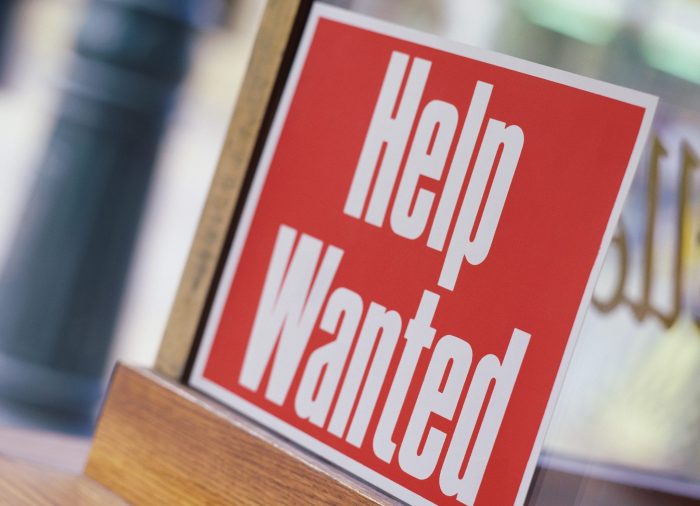Between You and Me: Labor shortages and high unemployment — what gives?
By Leah Dunaief

Why, if there are 9,700,000 Americans looking for work now, some six percent of our population, are there so many signs outside businesses seeking helpers? Granted, many of those signs are in front of restaurants looking for waiters and shops needing salespeople, service industries in the main, but why the disconnect? And this is not just a regional problem but one in large cities like New York, villages like ours, as discussed at a recent local chamber of commerce meeting, and even rural communities.
The situation could have some unwelcome consequences as the economy tries to recover. “It could act as a brake on growth and cause unnecessary business failures, long lines at remaining businesses and rising prices,” according to an article in last Saturday’s The New York Times, entitled “Businesses Challenged to Fill Jobs.”
The story, written by Neil Irwin, goes on to offer some possible answers. First is the suggestion that benefits are too generous. “The government is making it easy for people to stay home and get paid. You can’t really blame them much. But it means we have hours to fill and no one who wants to work.” That’s a quote from a pub owner in upstate Baldwinsville, New York, that appeared in the Syracuse Post-Standard and was reprinted in the NYT.
Some people can make as much or more, thanks to the expanded weekly unemployment payments and the various stimulus cash that has been delivered by the government, at least for awhile. With the reawakening of restaurants and services now, there are more jobs than applicants, which doesn’t drive workers to seek work, compared to the opposite, when the pandemic first hit and jobs were disappearing. The recipients of the cash are doing what economists hoped they would do: spending it. That encourages businesses to reopen, but without enough help. Hence the problem. But it may cure itself when expanded benefits run out in September.
There are other reasons workers may not be inclined to rush back into the workforce. Some, especially those with public-facing jobs, may be afraid of getting sick themselves or perhaps bringing the virus home to vulnerable family members. There does seem to be a relationship between vaccinations of people and a rise in their employment rate, according to the NYT. Researchers have found that a “10-percentage-point increase in those fully vaccinated results in a 1.1 percentage-point increase in their employment.” It would make sense that vaccinated people are more comfortable serving the public.
Here is another possible explanation for the labor shortage. Some of the workers are still needed at home, especially women who might be caring for children, some taking classes remotely, or elderly members of their family. The Times goes on to quote a survey indicating that 6,300,000 million people “were not working because of a need to care for a child not in a school or day care center; and a further 2,100,000 were caring for an older person.” Many of those people, especially women, have disappeared from the rolls of the unemployed and are not even counted any longer. The answer here, as in everywhere else, is in conquering the virus and establishing herd immunity so schools and day care centers can open.
For those businesses that have thrived during the pandemic and have been able to raise the wages they pay workers, like Amazon or construction companies, there is less of a supply problem. But those businesses take away potential workers from industries like restaurants, with thin profit margins. And those workers may not return if they have found better berths for themselves elsewhere.
These issues will sort themselves out eventually, as public health improves and supply-and-demand comes to equilibrium. But one thing is certain. The return to any sort of “normal” will not happen without bumps in the road.







